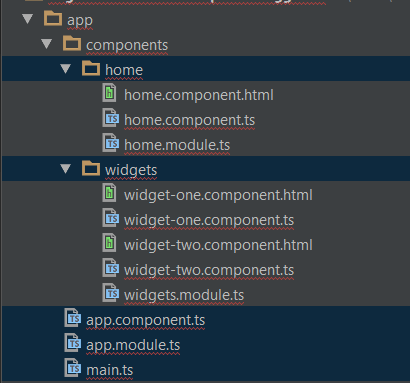Components that you use across multiple applications need to follow a module pattern that keeps them separate from your application logic. This will allow you to make these Angular 2 components reusable and shareable and is the same pattern followed by many libraries that you may import into your projects.
The structure likes this:

In widget-one.component.html. we use *ngIf to control the display, to do this, we have to import CommonModule from angular/common, which inlcudes NgIf, NgFor....
import { NgModule} from '@angular/core';
import { CommonModule } from '@angular/common';
import {WidgetOneComponent} from './widget-one.component';
import {WidgetTwoComponent} from './widget-two.component';
@NgModule({
imports: [CommonModule],
declarations: [WidgetOneComponent, WidgetTwoComponent],
exports: [WidgetOneComponent, WidgetTwoComponent, CommonModule]
})
export class WidgetsModule {
}
The CommonModule is available for root Module. When you create a sub module, it won't import CommonModule by default, so you need to imports it and exprots it to other sub module for free.
widget-one.component.ts:
import { Component, OnInit } from '@angular/core';
@Component({
moduleId: module.id,
selector: 'widget-one',
templateUrl: '<div *ngIf=selected'This is widget one </div>
})
export class WidgetOneComponent implements OnInit {
selected = false;
constructor() { }
ngOnInit() { }
}